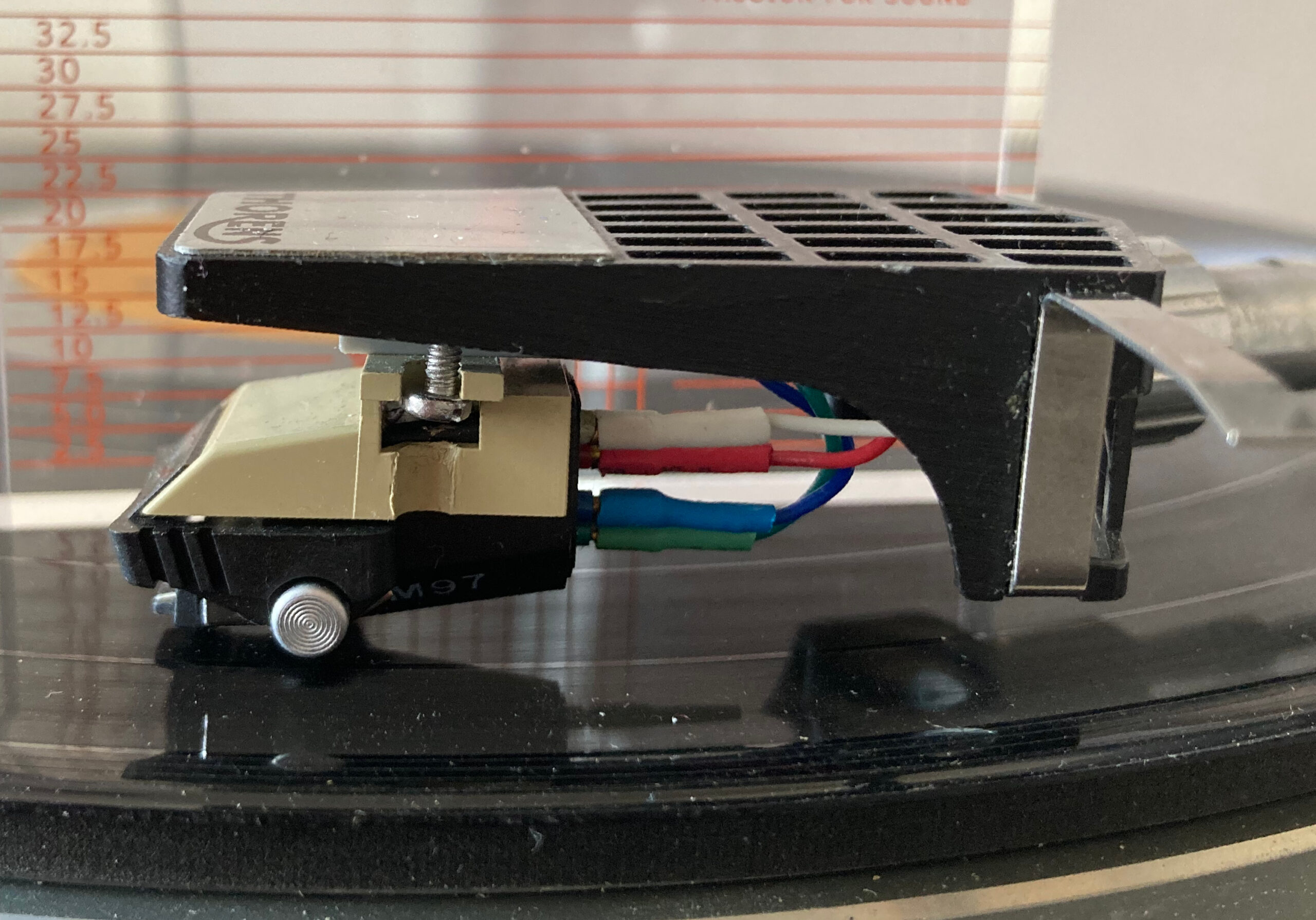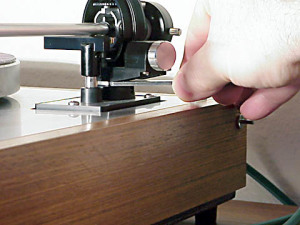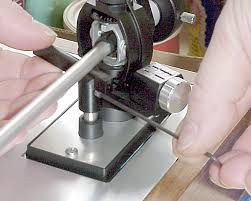Another patience-demanding task is adjusting the TP11/TP16 tonearm height installed on stock TD-165/160 turntables: a tonearm should be perfectly horizontal while reading; a slight dip toward the headshell is acceptable. There are simple tools that allow checking the tonearm height.
The issue here is making sure the needle touches the record groove with the correct angle. In fact, what we’re adjusting here is usually referred to as Vertical Tracking Angle (VTA), while it would be more correct to talk about Stylus Rake Angle (SRA). Let’s say that it is fairly sufficient for many cartridges out there that a tonearm be horizontal while playing.
Tonearm height adjustments can be necessary if we replace the mat with one of different thickness or we decide not to use shims when installing a cartridge on a vintage Thorens tonearm. Sometimes it is also needed after having adjusted the suspensions.
Thorens like mine needed a thin Allen key to unlock the 2 small screws that hold the tonearm’s pivot. Then it is easy to slide the pivot up and down until the desired height is reached. The two Allen screw are on the tonearm base’s right and rear sides (top, left – a TP16 installed on a TD-160). On a TP11, before locking the screws, it is mandatory to check whether the two antiskating shafts be parallel (see two paragraphs ahead), as one moves freely when the VTA screws are unlocked.
The tonearm height adjustment will almost always involve the adjustment of the cueing mechanism’s L-shaped bar. Its own Allen screw is to be unlocked as in the picture at right and the L bar must be positioned so that it won’t touch the tonearm while it is on the record. After having lowered a tonearm it may happen that the cueing bar is too high and the needle would be unable to reach the grooves…


